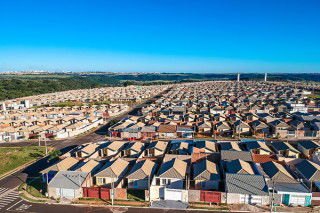Cement sales in the Brazilian market remained largely stable at 3.964Mt in December 2018 from 3.97Mt in December 2017, according to the latest data from the country’s cement association, SNIC.
In the central-eastern part of the country sales advanced 5.5 per cent YoY to 400,000t. Growth was also reported in the key southeastern region (+3.2 per cent), where sales reached 1.882Mt, and the south, which saw sales increase by 1.1 per cent to 646,000t. However, in the northeast a 4.9 per cent YoY drop to 858,000t was reported and in the north, the market contracted by 21.2 per cent to 178,000t.
Exports from Brazil doubled from 4000t to 8000t in December 2018, resulting in total sales by domestic producers of 3.972Mt, compared to 3.974Mt in December 2017.
Full-year 2018
In 2018 domestic sales slipped 1.2 per cent YoY to 52,692Mt from 53,306Mt in 2017. Domestic supply was supplemented by around 0.2Mt of imports, resulting in an apparent cement consumption of 52.9Mt, representing a decrease of 1.5 per cent when compared with 2017.
While the year had started positively, a truck drivers’ strike and the beginning of the economic slowdown reversed the positive trend. In the month of the strike, the sector was prevented from successfully selling around 0.9Mt. In addition, the slow economic recovery and the electoral environment contributed to the fourth-successive year of decline, which has now accumulated to 26.2 per cent.
In addition, freight, inputs, fuels and electricity prices increased significantly in 2018, forcing the industry to seek alternatives to reduce these impacts. The co-processing of waste as well as the modernisation of production standards helped.
In terms of regional variations, the northern cement market was hardest hit as it saw sales fall by 10.1 per cent to 2.368Mt. The northeast, the country’s second-largest cement market also reported a decrease in deliveries, which were down 3.8 per cent YoY to 10.88Mt. In the south sales edged down by 0.4 per cent YoY to 8.685Mt. However, sales in Brazil’s largest cement market, the southeast, remained stable at 25.083Mt as did shipments in the central-eastern part of the country (5.676Mt).
Exports increased by 14.3 per cent to 88,000t when compared with an export volume of 77,000t in 2017.
2019 forecast
However, the cement association expects 2019 to be a significantly better year. SNIC President, Paulo Camillo, said that the new mandates in the federal and state governments as well as improving confidence levels will result in a more positive 2019. "After four years of decline, we believe that 2019 will be our first positive year. We expect growth close to three per cent for this year ", projects Paulo Camillo.
In addition to this optimism, the industry is also awaiting the completion of its ambitious project to map the sector's projected carbon emissions by 2050 and their respective reduction alternatives. The industry is also expected to position itself in relation to the instruments of carbon pricing in public policies.

Brazil’s cement market contracts in August
Cement sales in Brazil slipped 2.5 per cent to 6Mt in August 2025 from 6.154Mt in August 2024, a...